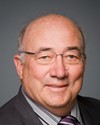As I said earlier, most of the clinics are provincial ones that Veterans Affairs funds. We have established protocols with the clinics to ensure that the types of services across the country are similar, even though they're delivered by different health authorities.
On the initial contact, the clinic receives a referral from the district office with details on the veteran's needs. The first thing the clinic does is contact the client to set up an appointment. Initial screening is done over the phone to see if there is any urgency or if any issues should be addressed right away. Once the clinic takes responsibility, they ensure that those who are in danger are referred or taken care of immediately.
So the initial activity in the clinic is the screening interview. It's normally done by a nurse, who gathers all the information she needs to present to the clinical team, because all the clinics we have are specialized clinics. They work in an interdisciplinary team of psychologists, psychiatrists, social workers, and nurses. They work together and say, “We have a new client who needs to be assessed. We don't know what the diagnosis is, so we need to do it.”
Depending on the initial interview, it may involve the psychiatrist and the psychologist. We invite the family members as part of the assessment plan, because we know that the impact of PTSD is not only on a veteran or the member, it's on the family. So we invite the spouse to accompany the veteran to the assessment so we have a global understanding of the family situation, not only the patient situation.
A standardized test is run. It's the PTSD anxiety scale. Different scales are used to try to understand the condition. A diagnosis is made by the interdisciplinary team—let's say it's PTSD. Then the treatment can start.
For treatment, there are different modalities depending on the condition. We use prolonged exposure therapy, for example. It's a type of treatment where the therapist ensures that the patient relives the trauma. It makes them speak about the trauma and write about it so it comes back. After that session the therapist is able to put things in perspective to make the difference between the situation then and the situation today. Over time, with exposure therapy, the feelings associated with their trauma will diminish.
There are different modalities of treatment that can be used. We use Telehealth as part of our treatment modalities. After an initial assessment at the clinic, treatment can be provided in the home community through Telehealth services. It's a new type of treatment modality we've started using. More than 85 of our clients have already received treatment through Telehealth facilities in their own communities.
They go to the local hospital or any centre that has Telehealth equipment. They might receive therapy from a psychiatrist. The psychiatrist will renew the medication or see how the medication is going. There is group therapy. There is couples therapy and group therapy, like anger management. At the conference two weeks ago we shared with the participants a new anger management protocol for group therapy that was shared with all the participants of the international traumatic stress society conference.
So there's either one-to-one, couples, or group therapy. In some cases we involve the children in group activities. And there's Telehealth. We use drugs and therapy. Those are the basic things you can expect from the clinic.



